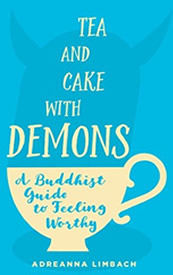It’s Never Too Late: Healing Prebirth and Birth At Any Age – Review
I was taken by Mia’s presentation of both information about what happens and what outcomes may result and also her specific processes, complete with dialogues and case studies, to work toward understanding and healing moments that can and do create imprints that influence our lives to come—who we are in this world, how we view ourselves within our family system as well as our communities at large, and how we believe the world accepts and values us.
Less Medicine More Health:
Less Medicine More Health: 7 Assumptions That Drive Too Much Medical Care comes at a time in medical history of great skepticism and distrust of previously lauded medical practices. In spite of this, I feel this book is a far cry from other less founded movements such as the anti-vaccination movement.
First Aid for Stress and Trauma with TTT
We have all experienced stress; in some form it is a survival tool that gives us energy and fuel to handle a pressing situation. Sometimes a stressful situation is so overwhelming that we will do anything to avoid that situation for the rest of our life. In these cases, our security system will code everything in that situation into a script that will trigger a stress response as soon as anything reminds us of it. That stress response will grow stronger as our system generalizes it, to the point where we can generate a full life-or-death panic response by simply thinking about it. It is then called post-traumatic stress.
The Proactive Twelve Steps
The Proactive Twelve Steps offers readers a way to develop a deeper understanding of behavioral change, codependency, stress, and trauma, as well as look at neuroscience and the Polyvagal Theory and their impact on our physiology and behavior. Serge presents a clear roadmap for self-compassion and mindful self-discovery and provides specific step-by-step instructions within a broader context that helps readers make sense of the healing process.
Resilience: Powerful Practices for Bouncing Back from Disappointment, Difficulty, and Even Disaster
Linda Graham’s 2018 book, Resilience: Powerful Practices for Bouncing Back from Disappointment, Difficulty, and Even Disaster, is a continuation of the practices she first wrote about in her book, Bouncing Back: Rewiring Your Brain for Maximum Resilience and Well-Being. Throughout each chapter, Graham details exercises aimed to build and strengthen resilience by way of regular practice. Graham divides the book into eight chapters that are designed to guide the reader through a journey of understanding and strengthening resilience.
Anna Halprin: Dance, Process, Form
Anna Halprin: Dance, Process, Form details the life and work of dancer and artist Anna Halprin. Halprin was an early innovator in dance therapy, using the medium as a form of personal exploration through artistic and physical expression. Her work with groups of people, either for specific art pieces or in experimental workshops, was highly influential for the development of both dance therapy and avant-garde expressionism.
Quickies: The Handbook of Brief Sex Therapy
Despite the obvious benefits the world of psychotherapy has brought into both individual and communal lives, many cultures still consider therapy taboo. The action of attending therapy is misunderstood and often maligned: going to a shrink is for the crazies, seeking out professional help signifies inability for self-sufficiency, deviating from a biopsychosocial norm from translates as if you are broken. Surpassing the taboo of therapy itself is that of sexuality. Sexuality alone is a taboo subject—the exploration of one’s sexuality, the preferences and expression of such are hushed, driven into the darkness by a societal dictum that preaches uniformity and singular experience. Discussing one’s sexuality in terms of therapy and biopsychosocial healing can be difficult under the effect of the taboo nature. It is precisely this attitude—the one of taboo avoidance—that Shelley Green and Douglas Flemons combat with a smile in their edited anthology entitled, Quickies: The Handbook of Brief Sex Therapy.
Therapists can and do feel uncomfortable and unqualified to handle sexual discussions with their clients. They often refer clients to a ‘sex’ therapist or a like-focused clinician to have these sorts of conversations. Green and Flemons, however, suggest that therapists encourage active discussions (maintained with professionality and a clinical lens) about sexuality; it is, after all, part of the patient’s development and understanding of their relationships. Quickies reflects just that attitude— encouraging open and integrated discussion throughout the entries.
Loveable
Kelly’s passion is writing. He’s a clinical psychologist, a husband, father, family member and friend. His time was wrapped around responsibility and at the end of the day, writing lacked priority. But words came to him and eventually he started blogging. He shares his “writing” story –his first blog, the move to a smaller town giving his wife space to do what she loved and he space to write . . . his passion and his purpose, his art and his voice, his grace on the page: “The book was what fanned the embers of spark within me, but there was not time to write it” (163). So, they made time. And his words reach audiences in amazing ways.
Through Windows of Opportunity
Through Windows of Opportunity, by neuroaffective psychotherapist Marianne Bentzen, and child psychologist and psychotherapist Susan Hart, is based on the presentations of four international leading psychotherapists concerning different neuroaffective approaches to child psychotherapy at a 2012 conference in Copenhagen. These presentations revolve around how the relationship between therapist and child can aid the child in overcoming traumas and insecure attachments in life by fostering a sense of emotional attunement and tolerance that stimulates development and change processes.
Modern Psychology and Ancient Wisdom: Psychological Healing Practices from the World’s Religious
Modern Psychology and Ancient Wisdom, 2nd edition, brings together experts who explore the use of ancient healing techniques from Buddhism, Christianity, Goddess, Shamanism, Taoism, and Yogic traditions as well as the mystical practices of Judaism and Islam and their application to modern counseling and therapy professions.














